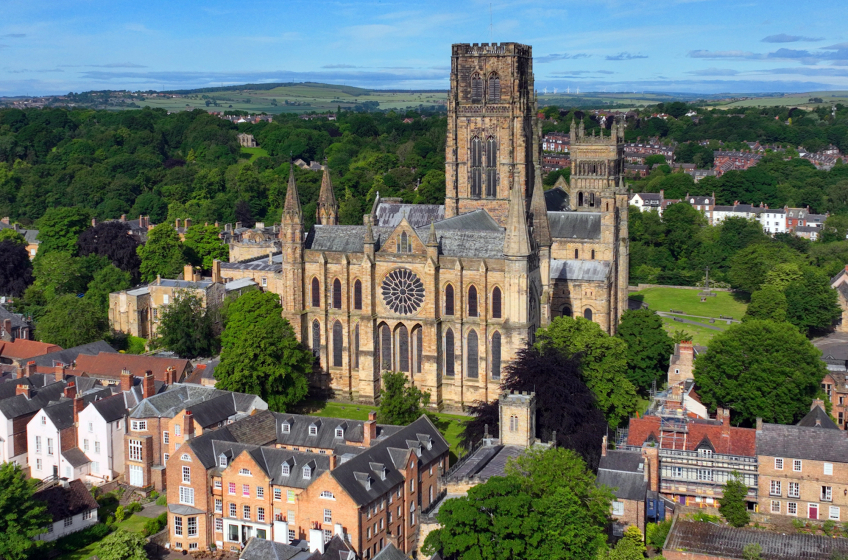Discover Durham Cathedral | A Visitor's Introduction to Durham Cathedral
Durham Cathedral stands as one of the most significant Norman buildings in England. Construction began in 1093 and was largely completed within 40 years. The cathedral's design features Romanesque architecture with later Gothic additions. Its iconic rib-vaulted ceilings, pointed arches, and the magnificent rose window are noteworthy.
Durham Cathedral visitor information
Key Features
Durham Cathedral houses several important relics, including the remains of St. Cuthbert, an Anglo-Saxon monk and bishop, and the Venerable Bede, an influential scholar and historian. The Shrine of St. Cuthbert, located behind the High Altar, remains a site of pilgrimage.
The Galilee Chapel, an exquisite example of transitional Norman to Gothic architecture, contains Bede's tomb. The cathedral’s central tower, standing at 66 meters, offers panoramic views of Durham and the surrounding countryside. Visitors can climb 325 steps to reach the top, a challenging but rewarding experience.
Library and Museum
The Durham Cathedral Library houses a collection of rare books, manuscripts, and early printed works. The Open Treasure exhibition in the Monks' Dormitory and Great Kitchen showcases artifacts from the cathedral’s history, including Anglo-Saxon carved stones, medieval manuscripts, and treasures from the cathedral’s collection. Interactive displays provide insights into monastic life and the cathedral's construction.
Visitor Information
Durham Cathedral is open to visitors daily, though hours may vary due to services and special events. Admission is free, but donations are encouraged to support the cathedral’s upkeep. Guided tours are available and provide a comprehensive overview of the cathedral's history, architecture, and significance. Booking in advance is recommended, especially during peak tourist seasons.
For those interested in exploring more deeply, the cathedral offers themed tours focusing on specific aspects such as the stained glass windows, medieval art, and the monastic library. Check the cathedral's website for details and scheduling.
Accessibility and Facilities
The cathedral is committed to accessibility, with ramps and lifts providing access to most areas. Wheelchair users can reach the Nave, the Quire, and the Chapter House. However, the climb to the central tower is not accessible to those with mobility issues. Assistance dogs are welcome, and there are accessible restrooms available.
The Undercroft Restaurant offers a selection of meals, snacks, and beverages, making it a convenient stop for lunch or a coffee break. The cathedral shop, located in the Cloister, sells a variety of souvenirs, books, and locally made products.
Events and Services
Durham Cathedral hosts a range of events throughout the year, including concerts, exhibitions, and lectures. The cathedral choir, known for its high standards and beautiful renditions of sacred music, performs regularly. Check the events calendar on the cathedral's website for up-to-date information.
Regular worship services, including daily prayers, Evensong, and Sunday Eucharist, are held. Visitors are welcome to attend these services, experiencing the cathedral's spiritual and communal life.
Getting There
Durham Cathedral is easily accessible by public transport. It is a short walk from Durham train station, which has regular services from major cities such as London, Edinburgh, and Newcastle. Bus services also connect Durham to surrounding areas. For those driving, parking is available in Durham city centre, though it is limited near the cathedral.
Shortlist
- Your Shortlist is empty

